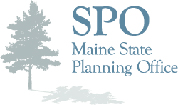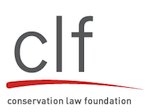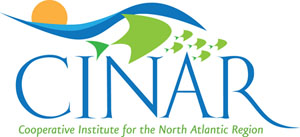August 2013 ESIP Journal
There is a new journal entry available on the EcoSystem Indicator Partnership (ESIP) webpage (http://www.gulfofmaine.org/esip/).
The current entry focuses on an interesting contamination forecasting system used in the Annapolis Basin of Nova Scotia for both wild and aquaculture clam harvests after heavy rain events, reported Christine Tilburg, ESIP program manager “We’ve discussed this topic in many ESIP conference calls including for our Climate Change, Aquaculture, and Contaminants Subcommittees. Be sure to check it out.”
Direct link to journal entry:
Coastal Land Use and Development theme paper available
The Coastal Land Use and Development theme paper, part of the State of the Gulf of Maine Report, is now available on the Gulf of Maine Council’s website:
http://www.gulfofmaine.org/2/resources/state-of-the-gulf-of-maine-report/coastal-development/
More than half the residents of the Gulf of Maine region live and work in the coastal zone. The year-round coastal population is growing and many coastal communities experience an influx of seasonal visitors. The Coastal Land Use and Development theme paper focuses on land use changes and land development—human settlements, structures, and economic activity—in municipalities immediately bordering the Gulf of Maine. Development has both direct impacts, such as fragmentation of undeveloped lands and increased impervious surfaces, and many indirect effects, such as diminished water quality. Even low-density development can compromise the ecosystem services that healthy coastal habitats provide—such as water filtration, carbon sequestration, and flood protection. Poor land-use decisions can fragment habitats, reduce biodiversity, hasten the spread of invasive species, cut off shore access, contribute to greenhouse gas emissions, and damage the long-term health of local economies. While many actions are underway to address coastal management needs, communities along the Gulf of Maine that seek to sustain healthy ecosystems and economies will need to work together and build on current efforts.
For more information about the State of the Gulf of Maine Report, visit the Gulf of Maine Council’s website:
http://www.gulfofmaine.org/2/resources/state-of-the-gulf-of-maine-report/
Massachusetts publishes new online mapping tool
The Massachusetts Coastal Zone Management agency (CZM) has published a new, interactive, online mapping tool, Coast Guide Online, http://www.mass.gov/eea/agencies/czm/program-areas/public-access-and-coast-guide/coast-guide/coast-guide-online.html can be used to find (and find out about) coastal areas that are open to the public. It includes hundreds of sites along the Massachusetts coast—from sandy beaches to secluded coves, rocky shores, and boat ramps—owned by government agencies and major nonprofits. These sites have been mapped in Google Earth, an easy-to-use and powerful online mapping tool, where each public location is tagged with a name, owner, web link, and picture (if available). Users may use additional Google Earth offerings, such as user photos, trails, and places of interest, to create a customized map. As of now, all federal, state, and county coastal public access sites have been mapped; town and land conservation organizations will be added as soon as possible.
COASTGIS 2013
The proceedings of CoastGIS 2013, the 11th Symposium for GIS and Computer Mapping for Coastal Zone Management, “Monitoring and Adapting to Change on the Coast” are now available at:
http://coinatlantic.ca/coastgis2013/docs/proceedings.pdf
2012 Marine Invasive Species Data Now Available in MORIS
Data layers representing the distribution of priority marine invaders are now available to view through the Massachusetts Ocean Resource Information System (MORIS) The 2012 data layers were created from observations at 55 monitoring sites by partners and Marine Invader Monitoring and Information Collaborative (MIMIC) volunteers. To view the new data layers, go to the MORIS website, http://www.mass.gov/eea/agencies/czm/program-areas/aquatic-invasive-species/monitoring/mimic.html. launch MORIS, and open the “Biology” folder, the “Marine Invasive Species” folder, and the “2012 Monitoring” folder. Data collected from 2008-2011 are also available. For more information about marine invasive species or to participate in monitoring efforts, see the Aquatic Invasive Species Program website.
Print


















